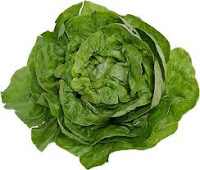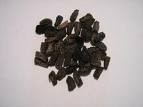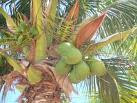The aubergines originated in the Indian subcontinent, Laos, Viet Nam, south west China, Northern Thailand and Myanmar. Wild aubergines plants can still be found in these areas. It began to be used in cookery as a vegetable in Asia by the year 3 AD. It is in fact a fruit, a berry to be exact in botanical terms, like the banana, tomato, chilli pepper and avocado. It is a member of the nightshade family like the potato and tomato, and was once viewed with suspicion because of this family connection as were the potato and the tomato. In the 16th century it was known as the malus insana or apple of madness. The Italian word melanzana and the Greek melitzana are corruptions of this. In India it is called the king of vegetables, and used in all kinds of dishes including in pickles. It was documented in Sanskrit writings as early as 300 BC and the hypnotic and narcotic properties of the plant were described. In Ayurvedic medicine the white varieties of aubergines are and have been used for diabetes and the roots for asthma.
 Their English and French name, aubergines is believed to have come from a corruption of the Arabic word, al-badhinan or the Persian, badanjan or baadangan. The Urdu word for aubergines, baingan would also seem to have the same origins. They were mentioned in the “Atlas of Plants in Southern China” written during the Jin Dynasty in China (265-316 AD) which was a practical handbook of agriculture. They reached Japan around the 8th century AD and Abu Ibn Sina (known in the West as Avicenna 980-1037) wrote about them. He advocated salting them and only using them when ripe and cooked for ear problems and treatment of excessive bile production. Otherwise they had a bad reputation and were thought to be the cause of many ailments.
Their English and French name, aubergines is believed to have come from a corruption of the Arabic word, al-badhinan or the Persian, badanjan or baadangan. The Urdu word for aubergines, baingan would also seem to have the same origins. They were mentioned in the “Atlas of Plants in Southern China” written during the Jin Dynasty in China (265-316 AD) which was a practical handbook of agriculture. They reached Japan around the 8th century AD and Abu Ibn Sina (known in the West as Avicenna 980-1037) wrote about them. He advocated salting them and only using them when ripe and cooked for ear problems and treatment of excessive bile production. Otherwise they had a bad reputation and were thought to be the cause of many ailments. |
| Aubergine Flower |
By the 7th and 8th centuries AD they had spread to Europe so were unknown to the ancient Greeks and Romans. In the Middle Ages they were thought to have aphrodisiac properties. They had been introduced into Africa sometime before their arrival in Europe and scarlet varieties are now grown there. In fact aubergines can be a variety of colours, ranging from white through to jade green and dark purple, and range in size and shape to mini aubergines smaller than okra through to large ones that we usually buy and they may be egg shaped or round or pear-shaped.
In Southern India they are used to protect against chicken pox, so if a member of the family has the virus, others eat aubergines (cooked over a flame) with onions, chillies, salt and rice to prevent the disease. In Ayurvedic medicine they are cooked and mashed with garlic and asafoetida (heng) or devil’s dung, for flatulence and to get rid of congestion and phlegm.
 |
| White Aubergine |
Aubergines are rich in minerals and the purple skin contains many phenolic flavonoids such as anthocyanins which help fight against cancer, aging, inflammation and neurological diseases it is believed. They contain vitamins A, C, E and K, amino acids including arginine (tipped as the natural Viagra) and the minerals potassium, sodium, phosphorous, selenium, iron, copper, calcium, magnesium, manganese, and zinc. They also contain beta-carotene. Thus they have potent antioxidant properties. Omega-3 and -6 fatty acids are also present in them. They also contain a phytonutrients in their skin – nasunin an antioxidant which in lab animals has protected the lipids (fats) in brain cell membranes. Aubergines also contain the phenolic compound chlorogenic acid which scientists think may have anti-cancer, anti-microbial, anti-cholesterol and anti-viral properties. Juice from aubergines has been found in tests to reduce cholesterol in the arteries and the aorta and so may be able to reduce the risk of heart disease. However more tests are needed before this is proved.
Below is a recipe for a Greek appetizer, an aubergines dip that is good served with crusty fresh bread. You can add grated carrots or tomatoes to this dish if you like.
MELITZANA SALATA
2 medium sized aubergines
4 garlic cloves, crushed to a paste
juice of 2 lemons
a few sprigs of parsley, chopped
a handful of coriander leaves, snipped
1 tbsp natural yoghurt
1 tbsp olive oil
 salt and freshly ground black pepper to taste.
salt and freshly ground black pepper to taste.Method
Pre-heat the oven to 350˚F and prick each aubergines 4 or 5 times with a fork to prevent them exploding, and place them on a greased baking sheet. Place in the oven and cook for 45 minutes.
Allow them to cool slightly so that you can easily handle them. You can scoop out the flesh and put it in a blender with all the other ingredients. A little skin won’t matter.
When thoroughly blended chill for a few hours.
This dip will keep for up to 3 days in the fridge.
This has Taste and is a Treat.




















































